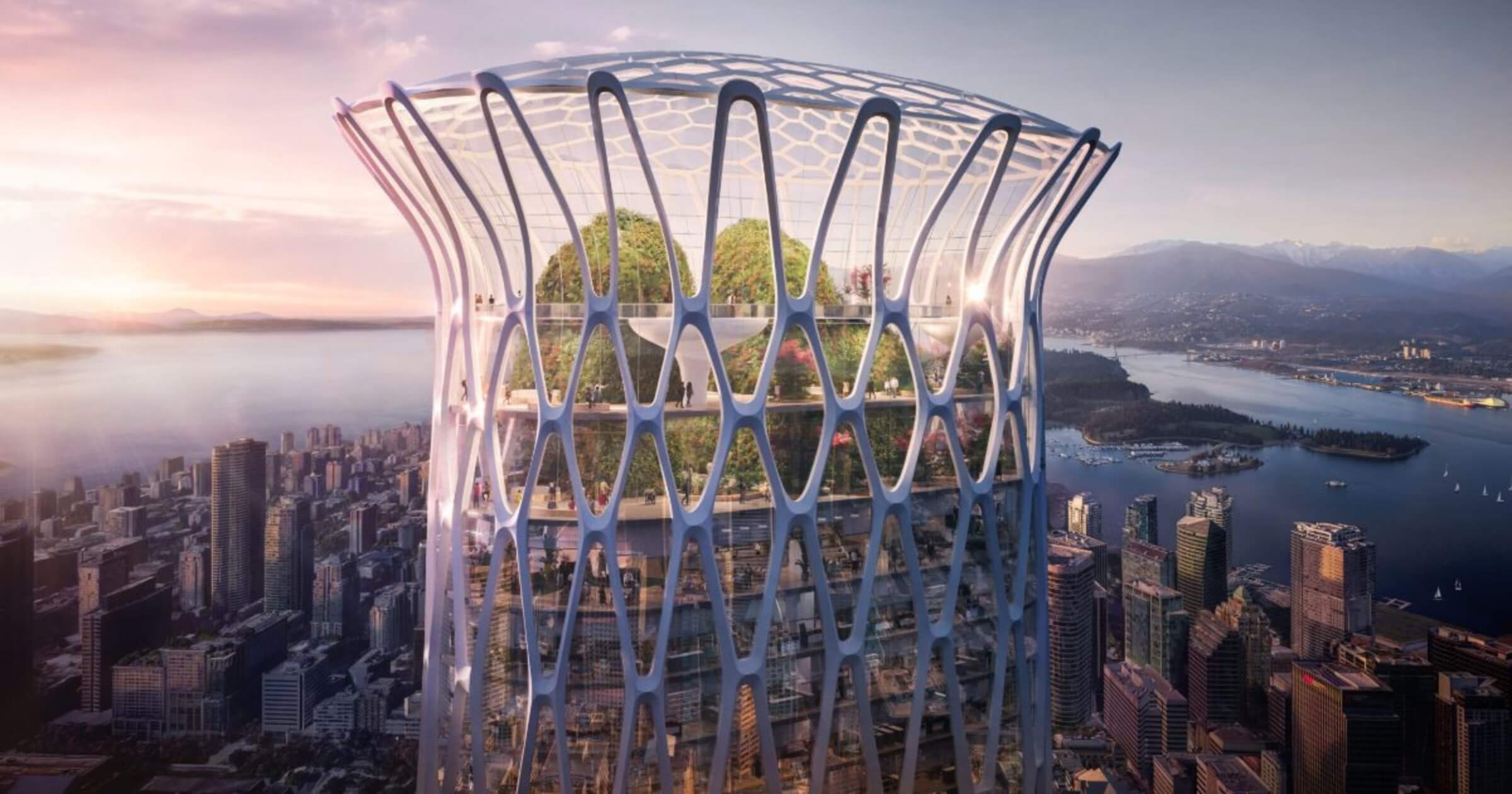Image courtesy of holborn.ca
Downtown Vancouver is on track to break a skyline record with the reveal of a soaring 315-metre skyscraper slated for 501–595 West Georgia Street. If approved, it will become not only the Vancouver’s tallest skyscraper, but also the site of Canada’s highest public observation deck, offering a panoramic view of the city, sea, and mountains like never before.
Quick facts about the tallest skyscraper coming to Vancouver:
- Address: 501–595 West Georgia Street
- Height: 315 metres (1,033 feet)
- Use: Hotel, residences, retail
- Architects: Kohn Pedersen Fox (Design), Henriquez Partners (Exec.)
- Observation deck: ~300m high, public access planned
- Estimated budget: Not yet disclosed, but towers of this scale typically exceed $1 billion CAD
- Timeline: Proposal stage as of 2024; subject to public review and city approvals
The design of Vancouver’s tallest skyscraper is a collaboration between internationally renowned Kohn Pedersen Fox Associates (KPF) as the design architect, and Henriquez Partners Architects as the executive architect, with Bonnis Properties and Kingswood Capital serving as the project developers. Featuring a shimmering glass façade and stacked, offset volumes, the tower is set to house a mix of hotel and residential units, along with retail at the ground level. Its distinctive silhouette will redefine the downtown core and become an architectural focal point for Vancouver’s future.
“The metaphor that we thought of was to inhabit, obviously, the top of the sea sponge. We wanted to make this place a world where local plants will be good all year-round,” said Gregory Henriquez, managing principal for Henriquez Partners Architects, in an interview.
“If you go out in the winter to the Bloedel Conservatory, it’s really a magical place. So if we could take the conservatory, put it up on top of our building, overlooking all of the context that surrounds you in the mountains, it could be something really special. The idea is a garden in the sky.”
The proposed public observation deck is expected to reach nearly 300 metres, making it the tallest publicly accessible observation deck in Canada, located within a residential and hotel tower. That feature alone positions the tower as both a functional space and a cultural landmark, opening up new possibilities for tourism and community engagement in the city’s dense urban center.
The project also indicates a shift in how Vancouver approaches zoning and urban planning. The city is known for its strict height limits and protected view corridors, but this proposal could mark a turning point. Vancouver’s “view cone” policy, which preserves sightlines to the North Shore mountains, has kept skyscrapers in check for decades. This tower would need special consideration or even exemptions, suggesting a bigger change in how the city balances livability with the growing need for vertical density. At nearly 100 metres taller than current height limits, it’s a bold step into new territory.
If approved, the tower would eclipse the current tallest building in B.C., the 201-metre Living Shangri-La, and change not just the city’s skyline, but its global profile. It also comes at a time when other major Canadian cities, such as Toronto and Calgary, are embracing ultra-tall towers as part of their growth.
Of course, the proposal is still subject to public and city review, and discussions around shadowing, infrastructure, and livability will all be on the table. But the buzz around the design of potentially Vancouver’s tallest skyscraper is already turning heads, and for good reason; this could mark a new era in West Coast urban development.
Subscribe to our newsletter for the latest in architecture, design, and urban development across Canada.



